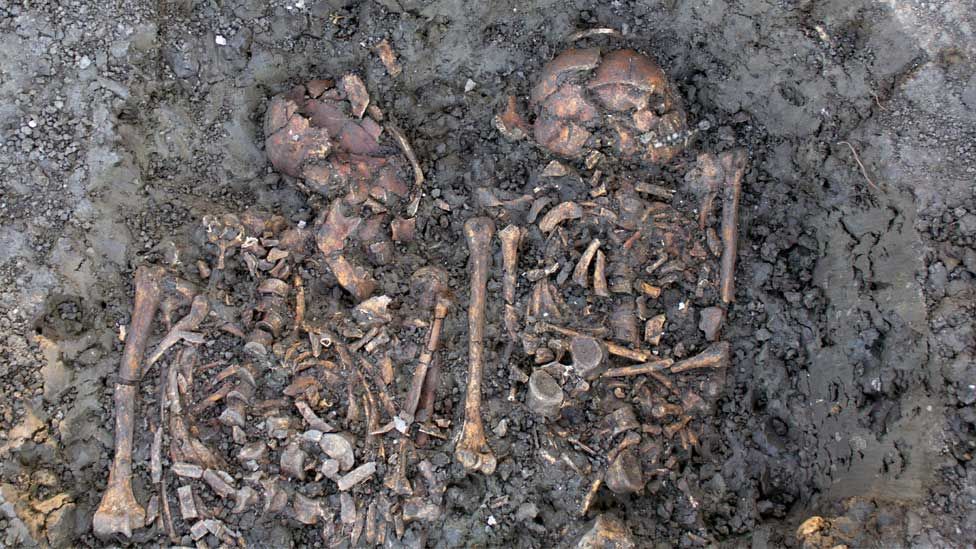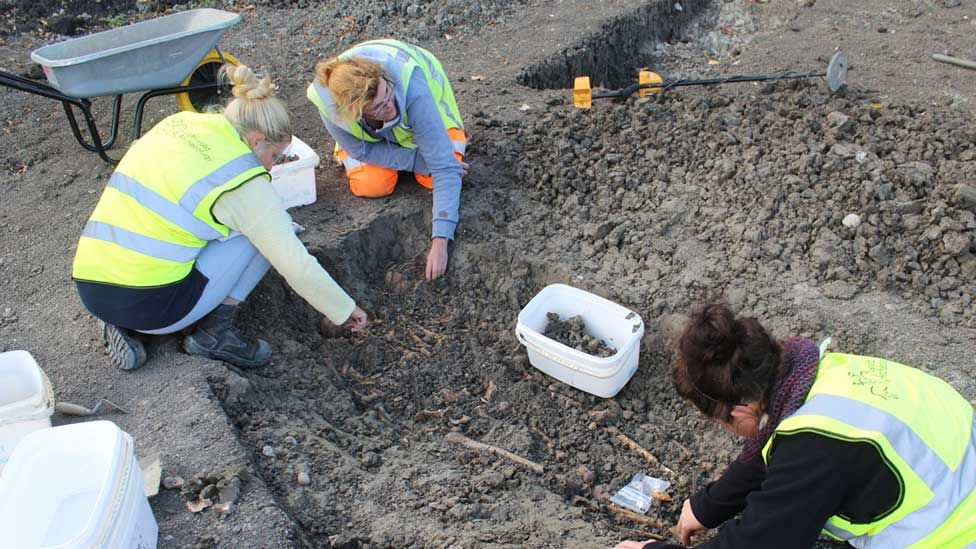Roman DNA bone analysis reveals Cheddington 'family tragedy'
9th October 2022
The grave was an unexpected discovery because no evidence of a farm settlement was found at the site
By Katy Prickett
BBC News, East
DNA analysis of three late Roman-era skeletons found in the same grave has revealed "a family tragedy".
Experts now believe a mother, her unborn son and her mother-in-law became ill and died at the same time.
The grave was found at Cheddington, Buckinghamshire, and the DNA was sequenced as part of an ancient genome project.
Human bone specialist Sharon Clough said the family relationship was "an entirely unexpected discovery".

Ms Clough said it was obvious a large grave had been prepared to accommodate the bodies
Ms Clough said: "Obviously a tragedy had happened to that family and that community - and the community wanted to continue the relationship the women had in life in death."
The grave was found during an excavation in 2018 and was considered "unusual", because most late-Roman or early Saxon era graves contain just the one body.
Radiocarbon dating revealed the burials took place between AD255 to AD433.
Ms Clough, who works for Cotswold Archaeology, said bone analysis revealed one of the skeletons was aged about 25, while the other was more than 45 years old when they were buried.

She could not see anything on the bones to indicate the cause of death which is why experts believe they must have died as a result of an illness
The pre-term baby was between about 32 and 36 weeks-old, but it was unclear if he was still in the womb at the time of the burial, or had been delivered and died.
While she speculated about a family relationship between the two women, it was not until the bones were sent off for analysis that its exact nature became clear.
"The Francis Crick Institute's Thousand Ancient Genomes of Great Britain research project has been a game-changer in recent years, answering questions that archaeologists have asked in the past, but not been able to answer," she said.
Mitochondrial DNA confirmed the younger woman and the baby were mother and child, while "more remarkably" the older woman was found to be related to the baby but not to the mother.
The project was also able to tell her the foetus was a boy, something bone analysis cannot do.
The bones will be archived at Buckinghamshire County Museum, Aylesbury, available for future research as techniques continue to develop.
The excavation was carried out ahead of a housing development for the Society of Merchant Venturers, Bristol.

Roman DNA bone analysis reveals Cheddington 'family tragedy'
The bones of the two women and unborn baby were found in the same grave during an excavation.